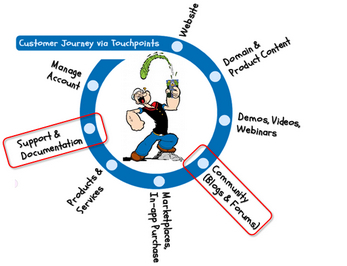“Cus tomer Experience”. If you use twitter, if you follow the activities of SDL through their website, or if you read the mailers we occasionally send out then you’ll probably have come across this expression quite a lot because SDL has completely restructured its business to focus on “Customer Experience”. So now we only have two divisions; Customer Experience Solutions and Language Solutions. These names reflect the operational focus of each division, but this doesn’t mean they are completely separate. In fact the opposite is true, and the crossover between the divisions reflects both the nature of our business because we increasingly use all of our own technology, and the customer journey which we can support for any organisation looking to deliver smooth, data-driven experiences to their own customers at every point of the buying journey, and across all channels, devices and languages.
tomer Experience”. If you use twitter, if you follow the activities of SDL through their website, or if you read the mailers we occasionally send out then you’ll probably have come across this expression quite a lot because SDL has completely restructured its business to focus on “Customer Experience”. So now we only have two divisions; Customer Experience Solutions and Language Solutions. These names reflect the operational focus of each division, but this doesn’t mean they are completely separate. In fact the opposite is true, and the crossover between the divisions reflects both the nature of our business because we increasingly use all of our own technology, and the customer journey which we can support for any organisation looking to deliver smooth, data-driven experiences to their own customers at every point of the buying journey, and across all channels, devices and languages.
Phew!
Continue reading ““I am strong to the finich…Cause I eats me spinach””


 This week SDL launched an
This week SDL launched an 

 I’m onto the subject of leverage from upgraded Translation Memories with this post, encouraged by the release of a new (and free) application on the
I’m onto the subject of leverage from upgraded Translation Memories with this post, encouraged by the release of a new (and free) application on the  This week I spent some time in Stockholm attending one of the SDL Roadshows. As usual it was a great event, and we have more to come. In fact this year I get to attend a fair few so if you’re attending Copenhagen, Milan or Paris in May then I’ll look forward to seeing you there!
This week I spent some time in Stockholm attending one of the SDL Roadshows. As usual it was a great event, and we have more to come. In fact this year I get to attend a fair few so if you’re attending Copenhagen, Milan or Paris in May then I’ll look forward to seeing you there! The debate over who’s right, and what’s the correct spelling… localization or localisation… will undoubtedly go on for a long time, unless you ask my Mother who knows the British are right of course! I always lean towards the British spelling, probably the result of my upbringing, and when asked I always take the British point of view.
The debate over who’s right, and what’s the correct spelling… localization or localisation… will undoubtedly go on for a long time, unless you ask my Mother who knows the British are right of course! I always lean towards the British spelling, probably the result of my upbringing, and when asked I always take the British point of view. I spent the weekend at my Mothers house the week before last and was digging around looking for photographs of myself when I was the same age as my son. I found a few… a few I wouldn’t share with anyone else but my son! What was I thinking with the baggy trousers and platform shoes…!
I spent the weekend at my Mothers house the week before last and was digging around looking for photographs of myself when I was the same age as my son. I found a few… a few I wouldn’t share with anyone else but my son! What was I thinking with the baggy trousers and platform shoes…! Why is MultiTerm a separate program, I can do exactly the same thing with another CAT tool? This is a fairly common question, and it has a very good answer too. It’s because MultiTerm is multitudinous! That is, it can be extended by you to provide a variety of termbases, so many in fact that you could probably create a structure to match anything you liked and you won’t be shoe horned into a fixed structure. As I thought about this the
Why is MultiTerm a separate program, I can do exactly the same thing with another CAT tool? This is a fairly common question, and it has a very good answer too. It’s because MultiTerm is multitudinous! That is, it can be extended by you to provide a variety of termbases, so many in fact that you could probably create a structure to match anything you liked and you won’t be shoe horned into a fixed structure. As I thought about this the 
 If this title sounds familiar to you it’s probably because I wrote an article three years ago on the SDL blog with the very same title. It’s such a good title (in my opinion ;-)) I decided to keep it and write the same article again, but refreshed and enhanced a little for SDL Trados Studio 2014.
If this title sounds familiar to you it’s probably because I wrote an article three years ago on the SDL blog with the very same title. It’s such a good title (in my opinion ;-)) I decided to keep it and write the same article again, but refreshed and enhanced a little for SDL Trados Studio 2014. In February last year I wrote an article called “
In February last year I wrote an article called “